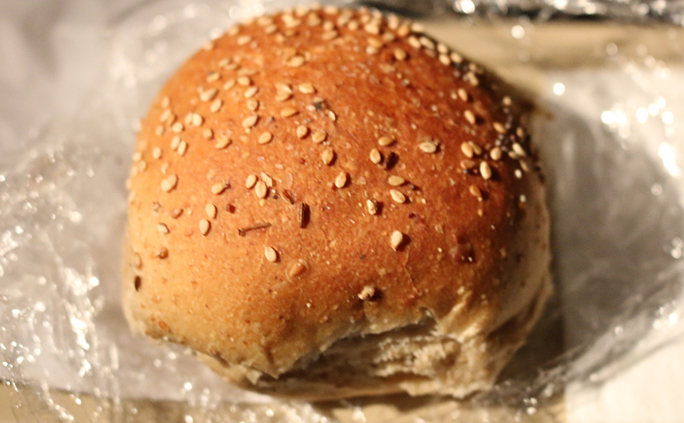Despite the fact that human beings need food to survive, wasting food is a substantial problem worldwide and has been for decades, as doing so costs billions of dollars while simultaneously depriving millions of people essential nutrition to survive and living life in a reasonably healthy manner. Important statistics from reliable sources are listed later on in this article which help to frame just how significant is the problem of wasting food.
This Airline Joins Fight Against Wasting Food With New Trial Concept

In seeking to reduce the volumes of fresh food items which remain unsold on certain services at the end of its flights and must therefore be thrown away, a trial program has been introduced by Swiss International Air Lines — in cooperation with a partner organization called Too Good To Go — in which those unsold food items are offered for sale at a fraction of the original price.
The availability of the discounted fresh food items is communicated via an announcement during the flight; and each passenger who expresses an interest to purchase the food is offered a bag containing one, two, or three such fresh food items at one third of their usual price…
…and to give an added element of interest and surprise, the contents of each bag are not revealed in advance for the purchaser.
Swiss International Air Lines “has long put a firm emphasis on environmental issues within its corporate culture, and takes sustainable actions at various levels to ensure the optimum use of resources in its business and operations”, according to this official press release from the airline. Swiss International Air Lines “already uses historical sales data for each flight to tailor its fresh product uplifts as closely as possible to likely passenger demand. But the company is now taking a further step in this direction, by teaming up with its partner to offer at reduced prices any fresh food items which remain unsold. To test customer acceptance, a trial of the new approach is being conducted in August and September on the last flights of the day from Geneva on SWISS’s European network.”
According to that press release, initial results from these trials have been promising; and this new approach has been well received passengers on the flights which food has been sold at reduced prices. A final analysis of the findings of the trial period will determine if the concept should be expanded to other flight routes.
Too Good To Go is the biggest platform in the world with regard to connecting companies with users to reduce food waste.
Sobering Statistics Pertaining to Food Waste

Most people do not realize how much food they throw away every day — from uneaten leftovers to spoiled produce. Estimates from the Environmental Protection Agency of the United States in 2018 claim that approximately 42.8 million tons of food — or 68 percent of the wasted food which was generated — ended up in landfills or combustion facilities. Managing food sustainably and reducing the waste of food can help businesses and consumers save money, provide a bridge in communities for those who do not have enough to eat, and conserve resources for future generations.
Food waste in the United States is estimated at between 30 percent and 40 percent of the food supply. This estimate of 31 percent food loss at the retail and consumer levels — which is based on estimates from the Economic Research Service of the Department of Agriculture of the United States — corresponded to approximately 133 billion pounds and $161 billion worth of food in 2010. This amount of waste has far-reaching impacts on society:
- Wholesome food that could have helped feed families in need is sent to landfills.
- Land, water, labor, energy and other inputs are used in producing, processing, transporting, preparing, storing, and disposing of discarded food.

“Food loss occurs for many reasons, with some types of loss — such as spoilage — occurring at every stage of the production and supply chain”, according to this article of frequently asked questions from the Department of Agriculture of the United States. “Between the farm gate and retail stages, food loss can arise from problems during drying, milling, transporting, or processing that expose food to damage by insects, rodents, birds, molds, and bacteria. At the retail level, equipment malfunction (such as faulty cold storage), over-ordering, and culling of blemished produce can result in food loss. Consumers also contribute to food loss when they buy or cook more than they need and choose to throw out the extras (See Buzby et al (2014)).”
Wasting food affects substantially more than our garbage cans, wallets or stores; it squanders our limited resources of water, energy, and land. According to this report from the Food and Agriculture Organization of the United Nations, if wasted food were a country, it would be the third largest emitter of greenhouse gases in the world, consume $2.6 trillion a year, and occupy nearly 30 percent of the farmable land of the planet.
As for the world, as much as 30 percent of the food supply of the planet is discarded. “We humans have a puzzling attitude towards food — it’s one of the few things in life that we absolutely need to survive, yet we can be shockingly careless with it”, according to this article written by
That article suggests five smart ways of reducing food waste:
- A disco mash-up of excess edibles and education.
- Enshrining traditional storage methods in elegant designs.
- A smart tracker for expiring fish, poultry and meat.
- A legal remedy to keep food from landfills.
- A mobile software application program which lets people buy soon-to-be tossed products — and save money.
Benefits of Reducing Wasted Food
According to this article from the Environmental Protection Agency of the United States, the benefits of the reduction of food waste:
- Saves money from buying less food.
- Reduces methane emissions from landfills and lowers your carbon footprint.
- Conserves energy and resources, preventing pollution involved in the growing, manufacturing, transporting, and selling food (not to mention hauling the food waste and then landfilling it).
- Supports your community by providing donated untouched food that would have otherwise gone to waste to those who might not have a steady food supply.
Ways to Reduce Wasted Food
Planning, preparing, and storing food can help your household waste less food. In addition to offering this potentially useful The Food: Too Good to Waste Toolkit and this Implementation Guide — which is designed to teach local governments and community organizations how to implement a Food: Too Good to Waste campaign in their community using the Toolkit — below is a list of tips from the Environmental Protection Agency of the United States to help you waste as little food as possible:
→ 1. PLANNING TIPS
By simply making a list with weekly meals in mind, you can save money and time and eat healthier food. If you buy no more than what you expect to use, you will be more likely to keep it fresh and use it all.
- Keep a running list of meals and their ingredients that your household already enjoys. That way, you can easily choose, shop for and prepare meals.
- Make your shopping list based on how many meals you’ll eat at home. Will you eat out this week? How often?
- Plan your meals for the week before you go shopping and buy only the things needed for those meals.
- Include quantities on your shopping list noting how many meals you’ll make with each item to avoid overbuying. For example: salad greens – enough for two lunches.
- Look in your refrigerator and cupboards first to avoid buying food you already have, make a list each week of what needs to be used up and plan upcoming meals around it.
- Buy only what you need and will use. Buying in bulk only saves money if you are able to use the food before it spoils.
→ 2. STORAGE TIPS
It is easy to overbuy or forget about fresh fruits and vegetables. Store fruits and vegetables for maximum freshness; they’ll taste better and last longer, helping you to eat more of them.
- Find out how to store fruits and vegetables so they stay fresh longer inside or outside your refrigerator.
- Freeze, preserve, or can surplus fruits and vegetables – especially abundant seasonal produce.
- Many fruits give off natural gases as they ripen, making other nearby produce spoil faster. Store bananas, apples, and tomatoes by themselves, and store fruits and vegetables in different bins.
- Wait to wash berries until you want to eat them to prevent mold.
- If you like to eat fruit at room temperature, but it should be stored in the refrigerator for maximum freshness, take what you’ll eat for the day out of the refrigerator in the morning.
→ 3. PREPARATION TIPS
Prepare perishable foods soon after shopping. It will be easier to whip up meals or snacks later in the week, saving time, effort, and money.
- When you get home from the store, take the time to wash, dry, chop, dice, slice, and place your fresh food items in clear storage containers for snacks and easy cooking.
- Befriend your freezer and visit it often. For example,
- Freeze food such as bread, sliced fruit, or meat that you know you won’t be able to eat in time.
- Cut your time in the kitchen by preparing and freezing meals ahead of time.
- Prepare and cook perishable items, then freeze them for use throughout the month.
- For example, bake and freeze chicken breasts or fry and freeze taco meat.
→ 4. THRIFTINESS TIPS
Be mindful of old ingredients and leftovers you need to use up. You’ll waste less and may even find a new favorite dish.
- Shop in your refrigerator first! Cook or eat what you already have at home before buying more.
- Have produce that’s past its prime? It may still be fine for cooking. Think soups, casseroles, stir fries, sauces, baked goods, pancakes or smoothies.
- If safe and healthy, use the edible parts of food that you normally do not eat. For example, stale bread can be used to make croutons, beet tops can be sautéed for a delicious side dish, and vegetable scraps can be made into stock.
- Learn the difference between “sell-by,” “use-by,” “best-by,” and expiration dates.
- Are you likely to have leftovers from any of your meals? Plan an “eat the leftovers” night each week.
- Casseroles, stir-fries, frittatas, soups, and smoothies are great ways to use leftovers too. Search for websites that provide suggestions for using leftover ingredients.
- At restaurants, order only what you can finish by asking about portion sizes and be aware of side dishes included with entrees. Take home the leftovers and keep them for or to make your next meal.
- At all-you-can-eat buffets, take only what you can eat.
Hunger Statistics

According to this article from the World Food Programme of the United Nations, 135 million suffer from acute hunger largely due to man-made conflicts, climate change and economic downturns. The current 2019 Novel Coronavirus pandemic could now double that number, putting an additional 130 million people at risk of suffering acute hunger by the end of 2020.
The United Nations is striving towards achieving zero hunger by the year 2030 — and according to this article from the organization which pertains to sustainable development in terms of hunger:
- Current estimates are that nearly 690 million people are hungry, or 8.9 percent of the world population – up by 10 million people in one year and by nearly 60 million in five years.
- The majority of the world’s undernourished – 381 million – are still found in Asia. More than 250 million live in Africa, where the number of undernourished is growing faster than anywhere in the world.
- In 2019, close to 750 million – or nearly one in ten people in the world – were exposed to severe levels of food insecurity.
- An estimated 2 billion people in the world did not have regular access to safe, nutritious and sufficient food in 2019.
- If recent trends continue, the number of people affected by hunger will surpass 840 million by 2030, or 9.8 percent of the global population.
- 144 million children under age 5 were affected by stunting in 2019, with three quarters living in Southern Asia and sub-Saharan Africa.
- In 2019, 6.9 per cent (or 47 million) children under 5 were affected by wasting, or acute undernutrition, a condition caused by limited nutrient intake and infection.
Final Boarding Call

Anyone who knows me knows that I wholly eschew wasting food. Despite being a finicky eater, I will sometimes consume food which I do not like in order not to waste it. I do not like wasting money; and the mere thought of casually disposing of food when someone else somewhere in the world is hungry and would be more than happy to have that disposed food disgusts me…
…so I will typically support virtually any idea of the reduction of wasting food — as well as conserving water — as neither resource is of an infinite supply; and other airlines may want to consider launching programs similar to the concept which is currently being trialled by Swiss International Air Lines.
The only potential problem is this conundrum: what if you order a bag — not knowing what is in it, and assuming no refunds are allowed — and you get something which you would not eat? Would that food not go to waste? I certainly would not eat a ham and cheese sandwich, for example.
I suppose as long as the airline earns some money off of it, it is not considered waste to the airline…?!?
All photographs ©2015, ©2016, and ©2018 by Brian Cohen.
